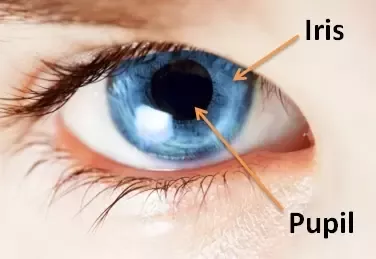In the contemporary era, propelled by the remarkable advancements in 21st-century technology, astrophotography has undergone a stunning revolution, introducing cutting-edge cameras that have opened a whole new window to the universe. These state-of-the-art devices have allowed us to capture awe-inspiring, high-quality images of various astronomical bodies—including those of the planets, stars, galaxies, etc.—that were once mere specks of light in the night sky.
Here’s a picture of the Milky Way galaxy, captured using an advanced camera from a spot where it is not easily visible to the naked eye of a human being.

But now, you might be wondering how such images are captured from a scientific point of view if we cannot see them with the naked eye. Let me explain in the most straightforward possible manner.
This is a long exposure shot, meaning the camera’s lens was open for around 10 seconds to collect as much light as possible. In that way, the captured image became bright enough to illuminate faint details. Hence, you feel like the sky is bright, although it is much darker than the naked eye. In contrast to the long exposure shots by the camera lenses, our eyes cannot do the long exposure, which means that whatever light falls on our eyes is quickly processed by our brain, unlike most modern cameras.
Additionally, we need to adjust camera settings and processing to get even better photos. So, cameras and eyes have a shutter like a window: you open it and let the light in. And inside it, there’s a film—called retina in the eyes—to receive light and convert it into an image.
Now with the eyes, you can keep the shutter open, but as soon as the light falls on the retina, it converts it into an image (or sends it to our brains for image processing)—which means that it cannot accumulate light to convert a dark image into a brighter one. However, cameras are different since you can keep the shutter open for much longer and customizable, and it will keep collecting light during all this time.
Once you think that it has collected enough light, you can ask it to process it into an image. The more time given, the brighter the image obtained, whereas the lesser time given, it’s vice versa. Also, the light from distant galaxies is exceptionally faint, so camera shutters must be opened for hours to collect enough light to capture their images.
Now, here’s a simple experiment you can do. Look at your eyes in a mirror. The brown or black (or green or blue, in some people) round thing in the middle is called the iris. You see another circle in the middle of the iris called ‘’pupil’’ that is always black.

The size of the pupil is not fixed and adjusts automatically concerning the light it is exposed to. If it is dark outside, the pupil is dilated. On the other hand, if it is in case bright outside, the pupil is constricted. Therefore, for this experiment, you need to do the following things step-by-step:
- Take a torch and take someone you know in a dark room.
- Turn on the torch and place it on the person’s shoulders to keep his eyes dark.
- Bring the torch forward and shine the light into the person’s eyes from a few inches.
- Observe the pupil size of the person.
After all these steps, you will see a reaction. The pupil’s size will gradually decrease as you shine light onto it. That is the result of this experiment. Why does this happen? It is because the iris of our eyes relaxes when the light is more, but when there is dim light, it contracts, thereby increasing the pupil’s size.
But, another question arises: is the brain ultimately the reason we cannot see far distances, despite its usefulness in various other aspects of life?
So basically, it’s not our brain’s fault entirely, but our eyes’ structure. Eyes have evolved to adapt to a hunter-forager lifestyle, where you are prey and hunter and not far away from your land. Therefore, you don’t need a good understanding or distant vision. However, birds like hawks have evolved extremely sharp vision over time because they must detect their prey far away.
Nonetheless, our evolution story is still in its infancy phase and will continue for centuries. However, the difference between the other species and human beings is that they had to rely on natural selection and evolution to survive in the harsher conditions of the environment and competition. In contrast, we were able to use our brains to good effect.
Moreover, we have not only survived as a species but have thrived to overcome the shortcomings given to us by nature. One example of our advancement is processing our world with our eyes but enhancing our abilities through HD cameras and astrophotography telescopes. Indeed, we can now process our world at both ends, from hunter-gatherer perspectives as well as the species planning to colonize other astronomical bodies utilizing the technology we have developed using our brains.
Acknowledgements: The author thanks Dr Talha for providing the Milky Way galaxy’s image.
Also, Read: Winter in Pakistan, deep sky Astrophotography

Ahmad Hassan Nadeem is a 16-year-old prolific author with over 30 publications to his name, including works featured in prominent outlets such as DAWN, The News International, Paper Crane Journal, Remington Review, AE Magazine, Ink Pantry, Naya Daur, and Visual Verse.

